
Who Were
The Cambs
The Cambs
at War
1/1st Btn 1914-1919
1914 - 1/1st Overview
1915 - 1/1st Overview
1915 - St Eloi
1915 - Fosse Wood
1916 - 1/1st Overview
1916 - The Schwaben
1916 - St Pierre Divion
1917 - 1/1st Overview
1917 - St Julien
Insignia, Medals & Books
Remembering The Cambs
Biographies
About Us &
This Site
The Offensive Draws to a Close - October 1917 to January 1918
Having been involved in two major attacks during the Third Battle of Ypres at both St Julien and the Tower Hamlets ridge, the Cambridgeshires went into rest at the end of September 1917, which coincided with the promotion of their commanding officer, Lt-Col ‘Ted’ Riddell who left to command a brigade. Riddell would soon be replaced by the returning Edward Saint, one of the regiment’s stalwarts from pre-war days.
Major Muirhead Clayton DSO, writing in the battalion history, The Cambridgeshires, wrote how the battalion was worn out by the fighting and hardships of the shell-swept swamps of the Ypres Salient:
The early promise of this battle had now dwindled to a series of attacks delivered through a sea of mud towards the Passchendaele Ridge.
We were silent on the subject, but in our hearts we began to debate whether the Higher Command who ordered the attacks fully realised the conditions under which the troops lived, fought – and died.
Soon they would be employed day and night trying to improve tracks, light railways and communications to the forward areas to help the Anzac Corps in its attacks on Passchendaele. Heavy rain began to fall again on October 4 and the ground became sodden. The men were rarely dry and casualties occurred most days.
As well as working parties, there was training and the arrival of drafts of officers and men. One of the new officers, who arrived on October 13, was the Cambridge sporting journalist Lt Frederick Newton Dall Drake Digby, who would command the Cambridgeshires in the 1930s. Having enlisted in the Artists Rifles in 1916, he was commissioned into the Cambs Rgt in May 1917. His spell on the front line would be shortlived because he was wounded on October 31 and returned to England. After the war, Drake Digby, as he was known, joined the re-formed Cambrideshires as a Captain in A Company, becoming a Major in 1929 and commanding the Battalion from 1936-40. He died in 1948.
At the end of October the Battalion returned to what Clayton described as the pestilential Tower Hamlets sector, but as it relieved the 1st Hertfordshires, it resulted in 10 casualties. At this time, Pte James Sparrow, of Christchurch, near March, was awarded an MM. It was reported that:
While crawling from shell hole to shell hole on October 26th 1917 in search of their companies, he and an officer happened on some wounded comrades, who were in need of food and drink. This they crawled back for and brought and then had a rough journey to the front line owing to the activity of snipers.
November was spent in the flooded shellholes between Tor Top and Polderhoek astride the Menin Road, with some time in support at Ridge Wood.
A casualty at this time was the Cambridge University law lecturer and Fellow of Downing College, Capt Walter Douglas Aston, who had joined the Cambridge University OTC in 1914, and was commissioned in April 1915 into 2/1st Cambs Rgt. Employed as an instructor, he was qualified as a first-class shot, despite shortsightedness, and was a musketry instructor. Joining the 1/1st Battalion in September 1917, he was wounded in the neck on November 2 and died of his wounds the same day, aged 35. He is buried at Lijssenhoek British Military Cemetery, near Poperinghe.
A significant event for the 1/1st Btn was a raid on November 15 by two companies of the German 31st RIR along the Menin Road, during which the Cambridgeshires sustained approximately 40 casualties.
For his actions during this raid, L/Cpl Dan Gray, a GER railway worker from March, was awarded the MM. A description of his actions stated:
When in charge of a Lewis gun post and during the heavy preliminary barrage you allowed the enemy to approach within 50 yards of your post and threw bombs and then brought your gun into action with surprising effect. Twelve of the enemy were seen to fall and the remainder returned in disorder, except one who was taken prisoner. To the coolness and fine leadership shown by you under heavy shelling and at a critical moment, the repulse of the hostile attack must in a large measure be attributed.
There was a bar to the MM for his actions during the raid for Pte Albert Law, from Northampton, who had been awarded a Military Medal for his work at St Julien on July 31. It is thought, but not certain, that Pte Charles Mann, from Liverpool but living in Norwich, and Pte William Warner, of Bures, also received their Military Medals for fighting off the raiders. Mann would be killed in March 1918 and has no known grave.
Shelling, be it high explosive, shrapnel and gas, never ceased in November and 20 were killed and 135 wounded (including stalwarts like CSM George Burbridge MC).
Clayton wrote: Sometimes it took three hours to get a bad stretcher case down, and the stretcher bearers were almost invariably wet to the waist before they completed their journey.
One of those bearers was Pte Albert John Holmes, of Cambridge, who was awarded a Distinguished Conduct Medal for his actions on November 14/15, again around the time of the German raid. His citation states:
For conspicuous gallantry and devotion to duty as a stretcher bearer. He dressed and evacuated the wounded all night under heavy fire. At dawn, though wounded in the shoulder while carrying several more cases, he volunteered to cross the open to an advanced post where casualties were occurring, and made two journeys, bringing back a wounded man each time on his shoulders. He made two more journeys to the regimental aid post before succumbing to exhaustion.
The last few months of 1917 produced several other awards to officers and men of the Battalion.
There was a Military Cross for 2nd Lt Henry Herbert Brett Grain, of Cherry Hinton, a partner in the auctioneers, A T Grain & Son. As acting brigade transport officer, his award was for gas operations on Menin Road on November 22. His citation reads:
For conspicuous gallantry and devotion to duty when in charge of a mule train carrying forward special stores under heavy fire. He was thrown from his horse, and though unable to ride and suffering considerable pain, he continued the journey and delivered the stores.
The Battalion’s RSM, Basil Howkins Matthews, of Cambridge, an employee of the city’s Bowes & Bowes printers, received an DCM in the New Year’s awards, with a citation printed a few months later stating:
For conspicuous gallantry and devotion to duty and consistent good work during a long period. His untiring energy and fine soldier-like spirit have always been of the greatest value to his battalion. During periods of heavy shelling he set a splendid example to his men under fire.
As the Passchendaele offensive drew to a close, the Battalion remained in the Ypres Salient, but got a welcome rest period on the coast near Boulogne. On December 31, the Battalion returned to Ypres, seeing one spell in the front line at Poelcappelle, before, on January 21 1918, leaving the Salient for a return to the Somme.
The year 1918 would be momentous with the Cambridgeshire Regiment fully involved in a near collapse of the Allied forces on the Somme during the German Spring Offensive and then the Advance to Victory from August 8, 1918.
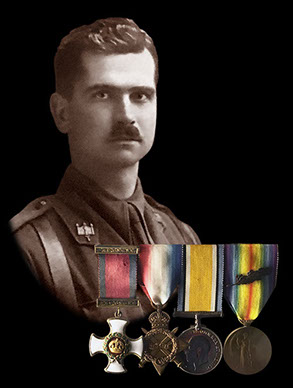
The new Btn CO, Lt Col Edward Saint.
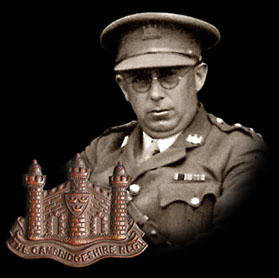
Frederick Drake Digby after the War.
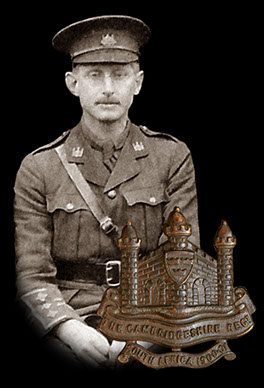
Capt Aston, Fellow of Downing College.
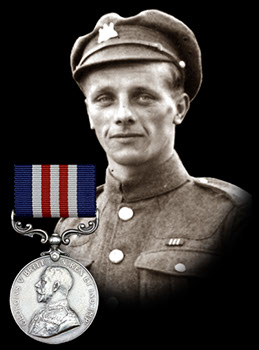
L/Cpl Dan Gray MM, from March.
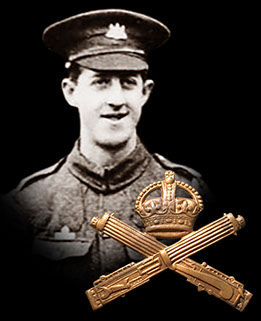
Ex "Cambs Gunner" Sgt Webb MM, KiA November 14th with the 118th Coy MGC.

This site went live on the 14th February 2015 to mark 100 years since the 1/1st Cambs went off to war.
WE WILL REMEMBER THEM
Email us: cambsregt@gmail.com
Copyright 2015, 2016, 2017, 2018, 2019 by Felix Jackson. The information and images on this site should not be reproduced without prior permission.